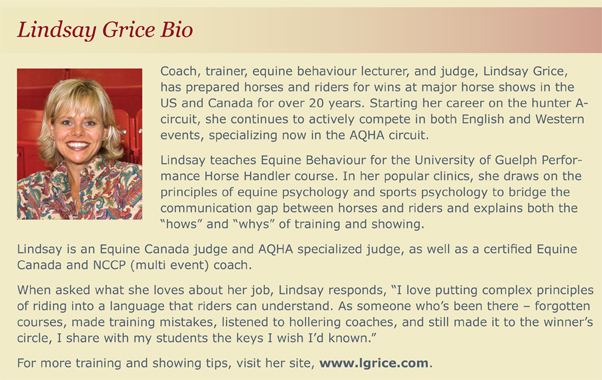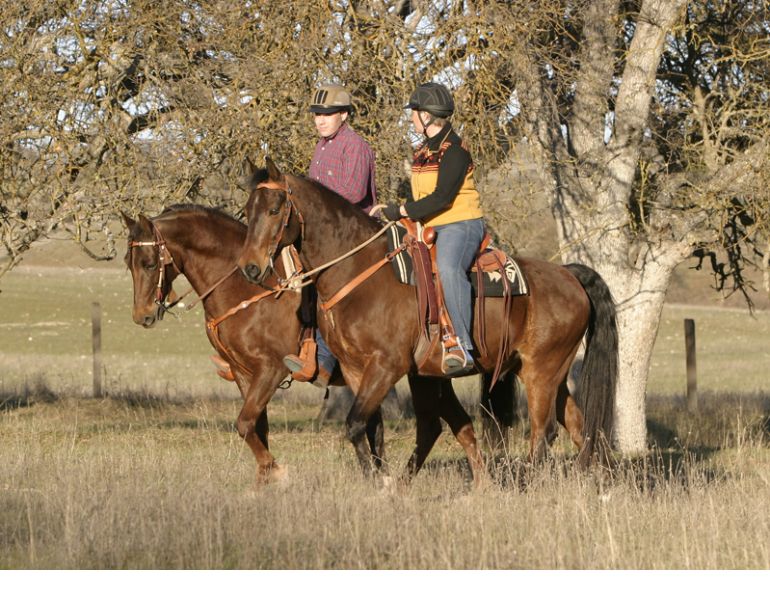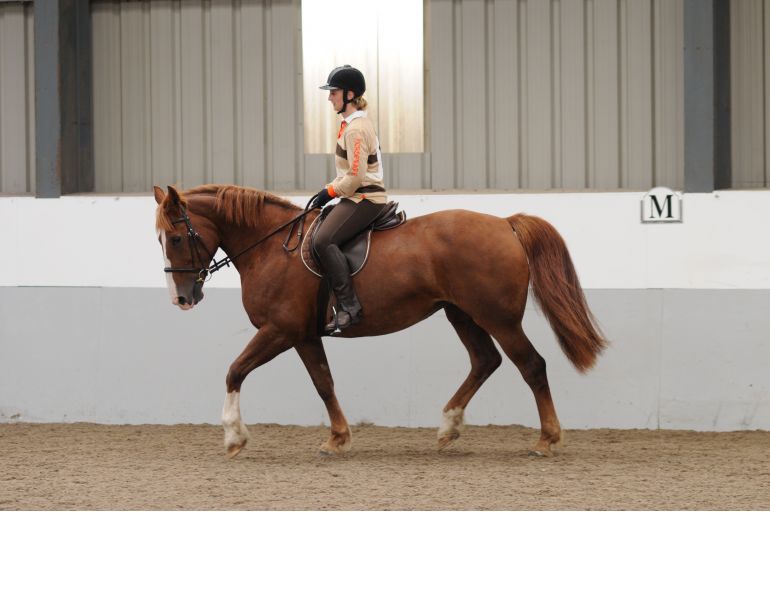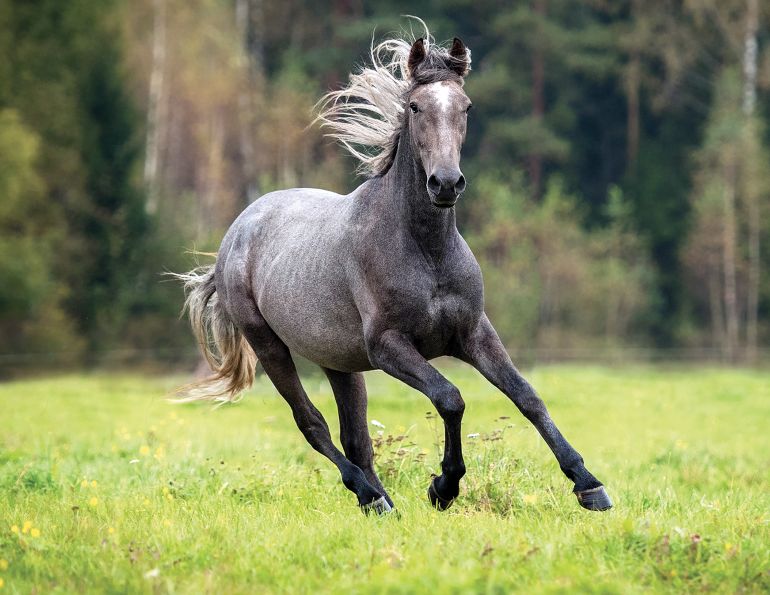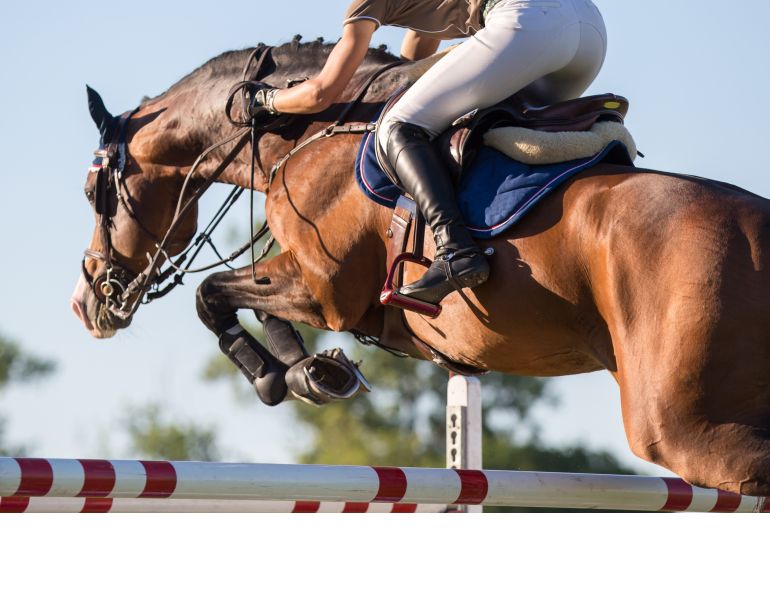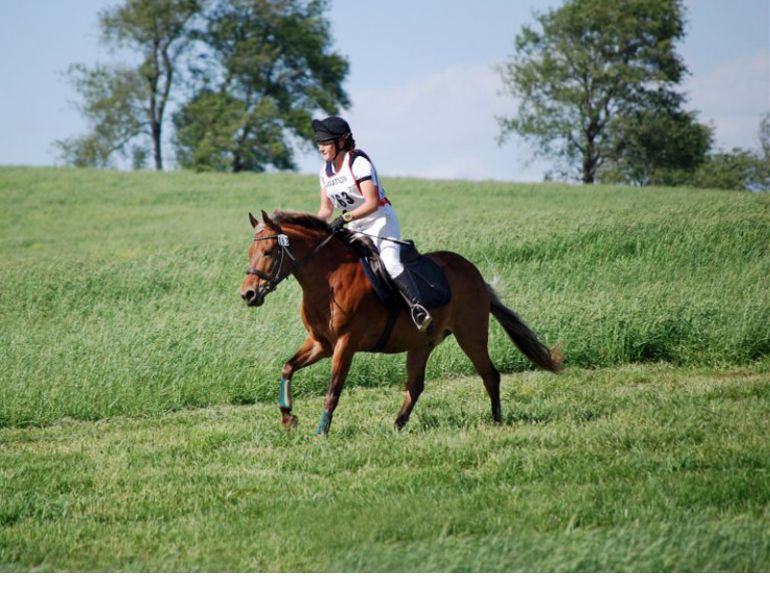By Lindsay Grice
Q I recently bought my first horse. He is so easygoing; he never spooks and I feel completely safe with him. The negative side is that he is so lazy I get exhausted trying to keep him in a canter. Is there anything I can do to pep him up?
A Riding should not be an aerobic workout like riding an exercise bike. Self-carriage is when a horse maintains his pace, straightness, and frame or outline when you lighten up on your aids. You’re not really riding until you take the training wheels off!
In order to have a more enjoyable ride and a more responsive horse, picture your horse within an imaginary box. This is a helpful image for any skill you are trying to teach your horse; horses seek freedom and you can show them how to get freedom inside that box. When you ask a horse for a response to your aid (your hand, leg, etc.) and he moves promptly in response to that aid, he should find immediate relief. If he doesn’t respond, your cue should increase until he does.
Let’s apply this to your horse who doesn’t want to go forward. As it stands now, you’re squeezing, pushing, and kicking until you’re red in the face and it isn’t bothering your horse enough to make him do anything about it. The same quality you love about him that makes him unflappable and trustworthy also makes him unconcerned about your leg. If your leg represents the back of the box, your horse has become quite content to rest on it as he would on the butt bar of a trailer!
The trick is to “resensitize” him to your leg. After all, if a horse can feel a fly on his side, he can feel your leg! First of all, use your leg in such a way that it is very uncomfortable to lean on. After requesting with a light squeeze and perhaps a cluck, whatever you have to do to motivate him, do it. This may involve reinforcing your leg with a dressage whip, increasing your spur size, or lifting up your heel in order to lift up a roll of his skin. Turn up the volume until he responds and the instant he does, be silent (remove your aid, drop your heel, and soften your body). I call this “squirting” your horse forward like toothpaste out of a tube.
Once he gets the picture, you will be able to use far less “squirt.” Maintaining the canter rhythm will change from “I can’t take my leg off or he will fall out the back of the box” to “He contacts the back of the box every time his rhythm slows and promptly moves forward into freedom.”
Main Article Photo: To resensitize a lazy horse, increase your aids until you get a response, then immediately stop your aids to give him relief.
This article originally appeared in the July 2010 issue of Pacific & Prairie Horse Journal.



